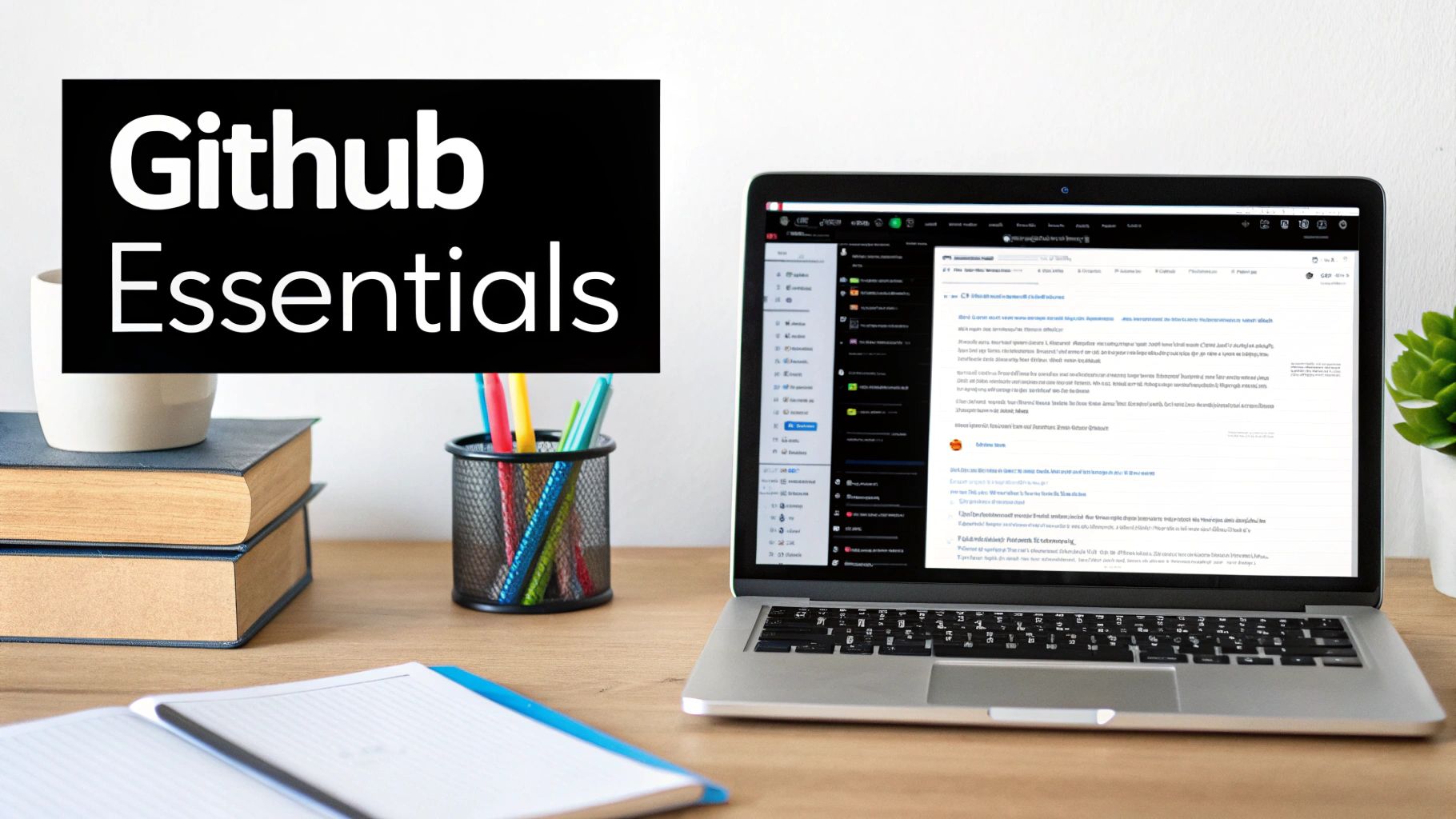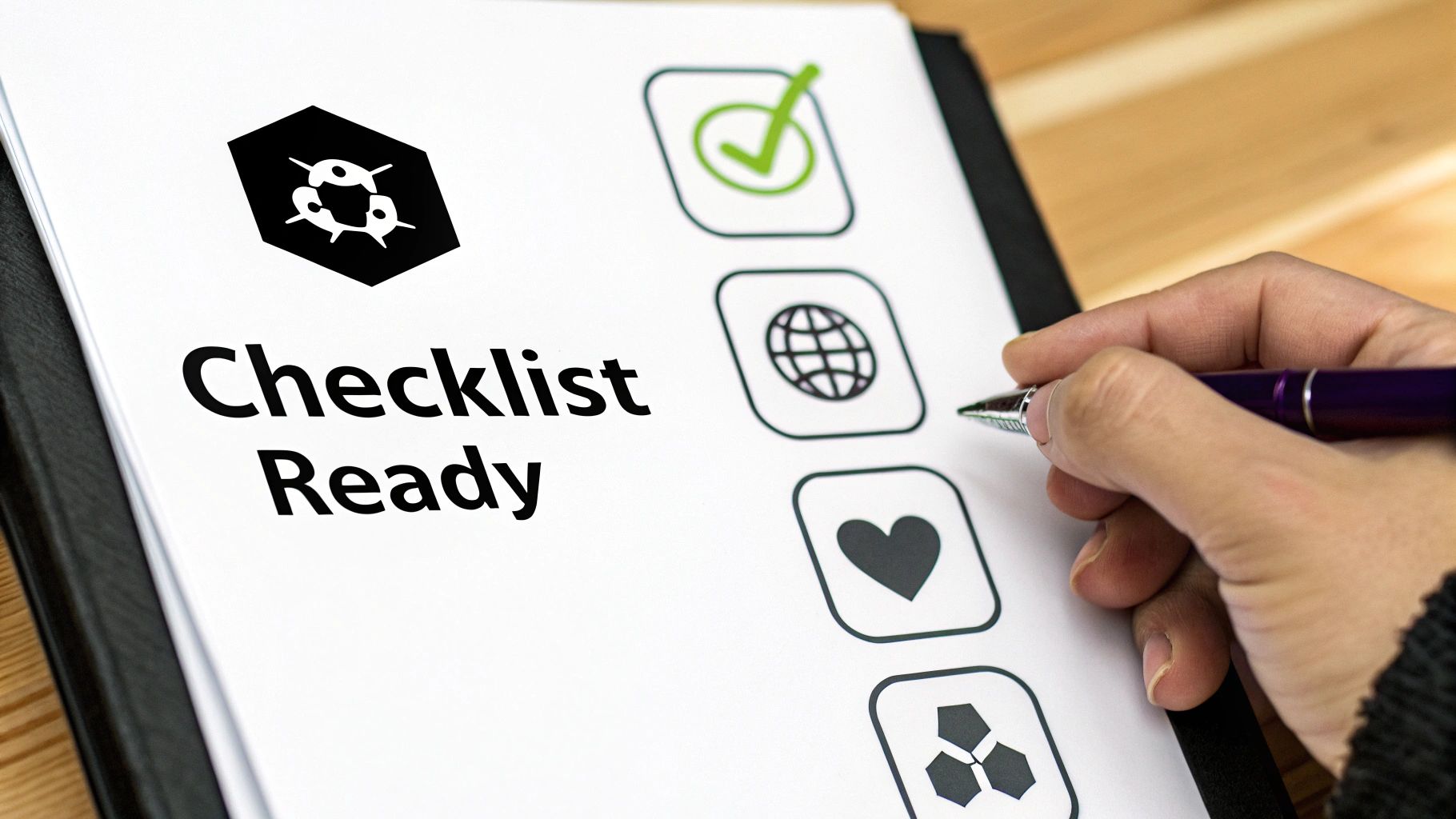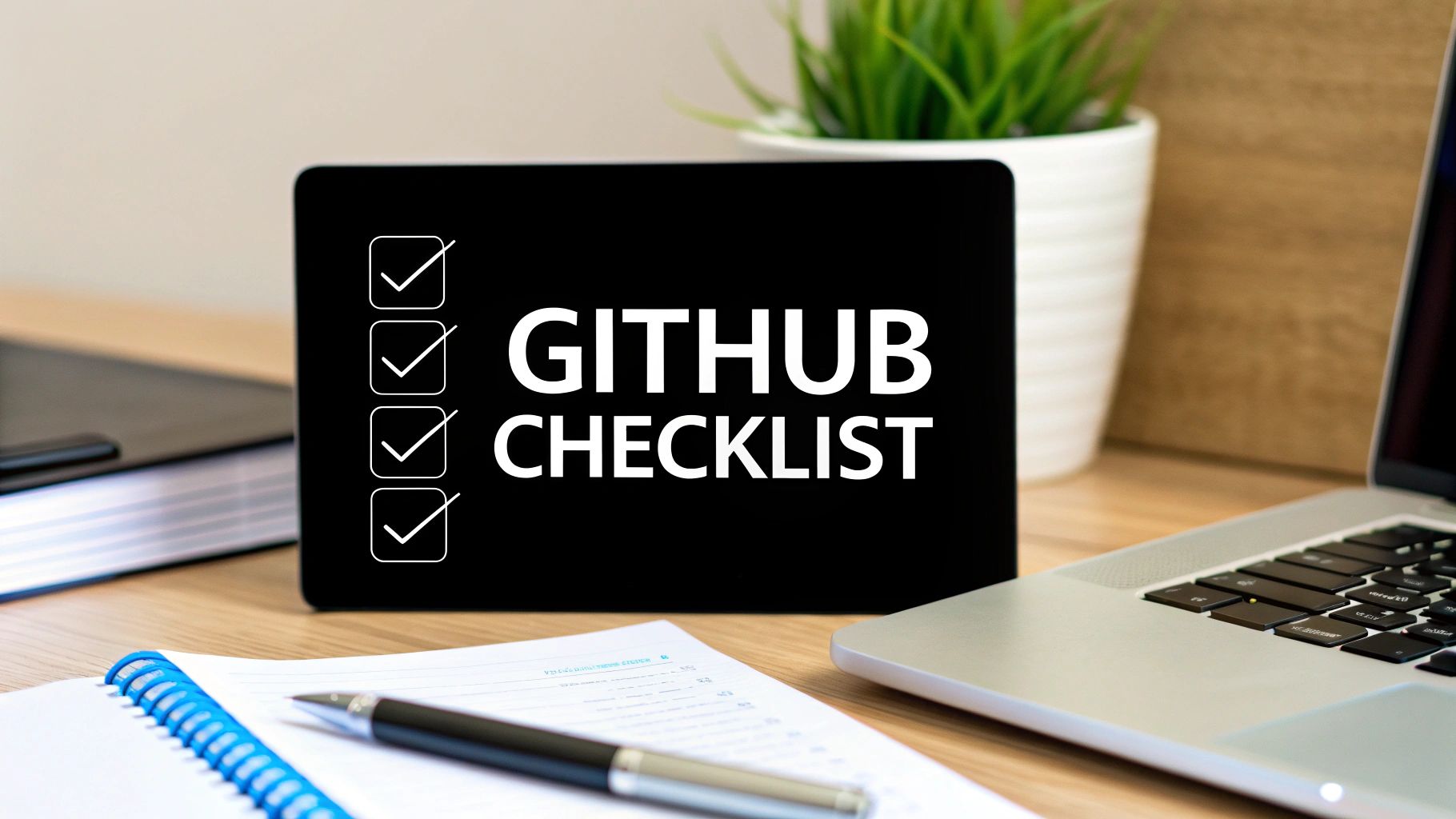The Ultimate GitHub Checklist Markdown Guide: From Beginner to Expert
Understanding GitHub Markdown's Evolution and Impact

GitHub Markdown has become a core part of modern software documentation, helping teams turn complex project requirements into clear, actionable items. It goes beyond basic text formatting to create an environment where documentation and code work together seamlessly. Let's explore how this has shaped modern software development practices.
The Power of Readability and Collaboration
GitHub markdown shines in its simple readability. The straightforward syntax makes it easy for anyone to write and understand documentation. This simplicity encourages teams to update docs more often, keeping project information current and accurate. The collaborative nature of GitHub makes it simple for team members to suggest changes and improvements, building a shared understanding of project goals.
Maintaining Living Documentation with GitHub Checklist Markdown
Development teams use GitHub checklist markdown to create living documentation that grows with their projects. This keeps documentation directly connected to the code, with changes in one reflected in the other. For example, teams can add task lists right inside pull requests using Pull Checklist, making sure important steps aren't missed during code reviews. Instead of static documents that quickly become outdated, teams have documentation that stays fresh and useful.
From Static Documents to Dynamic Collaboration
GitHub's markdown usage shows interesting patterns in how developers work. With millions of markdown files on GitHub, researchers have studied these patterns to improve features and performance. Learn more about markdown usage analysis. Moving from static documents to this interactive approach helps teams work better together. Tools like Pull Checklist make this even easier by handling checklist management automatically, letting teams focus on building great software while keeping documentation valuable throughout the project.
Crafting Professional Checklists That Drive Action

Development teams get results with clear, purposeful checklists. These go far beyond basic to-do lists - they serve as key tools to keep projects on track and teams aligned. From planning sprints to managing releases, a solid checklist helps teams catch mistakes early, work better together, and stay focused on what matters most.
Structuring Checklists for Maximum Impact
In GitHub markdown, effective checklists need smart organization. The best approach uses a clear hierarchy with nested lists and descriptive headers. For instance, a major task like "Release Preparation" can break down into sub-tasks such as "Code Review," "Testing," and "Documentation." This makes the process easy to understand and follow.
Designing Checklists for User Engagement
Build checklists with your team in mind. Keep information clear and direct to help people take action. One proven method is progressive disclosure - showing detailed steps only when needed. This helps prevent overwhelm and keeps team members focused. Adding checkboxes in GitHub markdown lets everyone track progress in real-time, keeping the whole team in sync.
Practical Techniques for Checklist Management
Teams can boost their checklist effectiveness with smart tools and methods in GitHub. Connect checklists to project management systems for automatic updates and notifications. Save time with templates for common tasks to maintain quality across projects. A "New Feature Checklist" template, for example, can guide developers through each step from design to deployment. Tools like md-stats offer useful data on documentation practices, tracking metrics like file counts and content length. Find more detailed statistics here. You might be interested in: Pull Checklist sitemap. These tools help teams make the most of GitHub checklists. Services like Pull Checklist add smart features like conditional checklists, helping teams work faster and better in pull requests.
Advanced Features for Better Documentation

While basic GitHub checklists work well as a starting point, the best documentation goes beyond the basics. Leading development teams know that interactive and well-organized documentation helps manage projects more effectively. Going beyond simple checkboxes opens up new ways to make information clearer and work processes smoother.
Collapsible Sections for Large Checklists
One useful approach is adding collapsible sections to your documentation. When dealing with extensive checklists, the amount of information can quickly become overwhelming. By using HTML details and summary tags in your markdown, you can group related tasks that stay hidden until needed. This works like a file explorer - you can expand folders to see details and collapse them to keep things tidy.
Adding Code Examples for Better Context
Including code snippets right next to checklist items helps explain tasks clearly. For example, when a checklist item involves changing code, having the relevant code block right there removes confusion and helps complete tasks faster. Having code and instructions in one place means less time switching between different windows.
Mixed Layouts for Clear Information
Combining tables, lists and formatted text helps present information in the most effective way. Tables work great for comparing options or showing structured data, while lists are perfect for step-by-step instructions. Using these different elements together in your checklist documentation lets you include more detail while keeping everything easy to read. For instance, you might use a table to outline test scenarios, followed by checklist steps for each one.
Extensions for More Features
Consider using markdown extension tools to add extra capabilities. Pull Checklist, available in the GitHub Marketplace, offers features like checklists that change based on what users do. These smart checklists show only the relevant tasks, which prevents clutter and confusion. The tool makes it easier to manage checklists and work together on pull requests. For context, platforms like WordPress.com that support Markdown see 43.7 million posts each month. See these statistics. By thoughtfully using core markdown features along with helpful extensions like Pull Checklist, you can build clear, dynamic checklist documentation that makes project management more effective.
Automating Your Checklist Workflow With Powerful Tools

Want to make your GitHub checklists work harder for you? By adding automation to your workflow, you can save time, maintain quality, and help your whole team work more efficiently. Let's explore how to transform basic checklists into dynamic project tools.
Implementing GitHub Actions for Automated Checklists
GitHub Actions gives you powerful options for automating checklist tasks. You can set up workflows that trigger when specific events happen, like when someone opens a pull request or pushes code. For example, you could create an action that adds a standard checklist template to every new issue automatically.
Here are some ways to use GitHub Actions with checklists:
- Auto-generate checklists from templates for new issues
- Update checklist items based on code changes
- Track completion status across projects
Scaling with Template Repositories
Save time and maintain standards by using template repositories for your checklists. By creating a main template with pre-made checklist files and automation scripts, new projects can instantly inherit your best practices. This approach helps teams:
- Start new projects quickly with proven checklist formats
- Keep processes consistent across multiple repositories
- Reduce errors from manual checklist creation
Building Custom Automation Scripts
Sometimes you need more specific automation than GitHub Actions provides. Custom scripts let you automate checklist tasks exactly how you want. Here are some examples of what scripts can do:
- Check for completed items and update issue status
- Sync checklist content between repositories
- Generate reports on checklist usage and completion
The github-stats tool can analyze how your team uses checklists and help identify where automation would be most helpful.
Practical Automation for Teams
The most effective teams combine multiple automation approaches. They use GitHub Actions for high-level workflow management, template repositories to scale processes, and custom scripts for specific needs. This creates a flexible system that keeps checklists accurate and consistent while letting the team focus on important work.
Building a Culture of Collaborative Documentation
Getting your team to effectively use GitHub checklist markdown requires building documentation practices that bring everyone on board. Creating an environment where docs are a shared responsibility leads to better quality, smoother development workflows, and more effective team communication.
Establishing Documentation Standards
Start by defining clear guidelines for your docs. Outline what each type of document is for - whether READMEs, pull request checklists, or design documents. Set expectations for detail level and format. For example, require all pull requests to include a standardized markdown checklist covering testing, code review and doc updates. When everyone follows the same standards, docs become much easier to find and use.
Streamlining Review Processes With GitHub Checklist Markdown
Good review processes keep documentation quality high. By adding GitHub checklist markdown directly in pull requests using tools like Pull Checklist, reviewers can quickly confirm all steps are done. This cuts down on back-and-forth messages and prevents important tasks from being missed. Having checklists in PRs also gets the whole team invested in documentation quality from the start.
Handling Concurrent Updates and Conflicts
Multiple people updating docs at once can lead to conflicts. Create clear rules for managing parallel changes through branching strategies and pull requests. Tools like Pull Checklist help by providing a central place to track checklist items within PRs, making it simple to monitor progress and avoid duplicate work.
Fostering a Documentation-First Mindset
Make documentation an integral part of development by treating it as important as code. Build it into every stage - from planning and design through implementation and testing. For example, keep template checklists for new features in a central repo to ensure documentation needs are considered from day one.
Overcoming Collaboration Challenges With the Right Tools
The right tools are essential for strong documentation practices. Pull Checklist offers features like dynamic checklists that adjust based on user input, simplifying complex workflows. It also provides reporting to track checklist completion and spot areas for improvement. Using tools like this automates tasks, enforces standards, and creates a smooth documentation experience. Good tooling combined with clear processes empowers teams to build sustainable, high-quality documentation practices that boost productivity.
Mastering Common Challenges and Solutions
When creating GitHub checklist markdown, you may encounter some common hurdles. Let's explore practical solutions to help you build clear, consistent checklists that work reliably across different platforms.
Handling Nested Lists and Indentation
One frequent challenge is managing proper nested list structure in checklists. If indentation is inconsistent, your checklist hierarchy can break and display incorrectly. The key is to use four spaces or one tab for each nested level:
- Main Task 1
- Sub-task A
- Sub-task B
- Main Task 2
- Sub-task C
This clear organization makes complex checklists easy to follow and helps prevent processing errors.
Maintaining Cross-Platform Compatibility
Your checklists need to look right whether viewed on Windows, Mac, mobile or different browsers. While markdown aims for consistency, rendering can sometimes vary between platforms. The best approach is to:
- Use standard GitHub Flavored Markdown (GFM) syntax
- Avoid platform-specific features
- Test your checklists across different devices and browsers
- Keep formatting simple and clean
Debugging Complex Markdown Structures
When issues pop up in complex checklists, try these debugging tips:
- Break large checklists into smaller sections to isolate problems
- Use online markdown editors to spot syntax errors
- Review indentation consistency
- Validate your markdown structure
- Test one component at a time
This systematic approach helps identify and fix issues faster.
Ensuring Consistent Rendering
To maintain professional-looking checklists:
- Create clear style guidelines for your team
- Define standard formats for headings, lists and code blocks
- Use templates for common checklist types
- Review rendered output regularly
- Get feedback from other team members
These practices help maintain quality, especially when multiple people contribute to documentation.
Make your code reviews more efficient with Pull Checklist. Our tool adds automated, condition-based checklists directly in your Pull Requests. Try Pull Checklist today to improve your development workflow.
